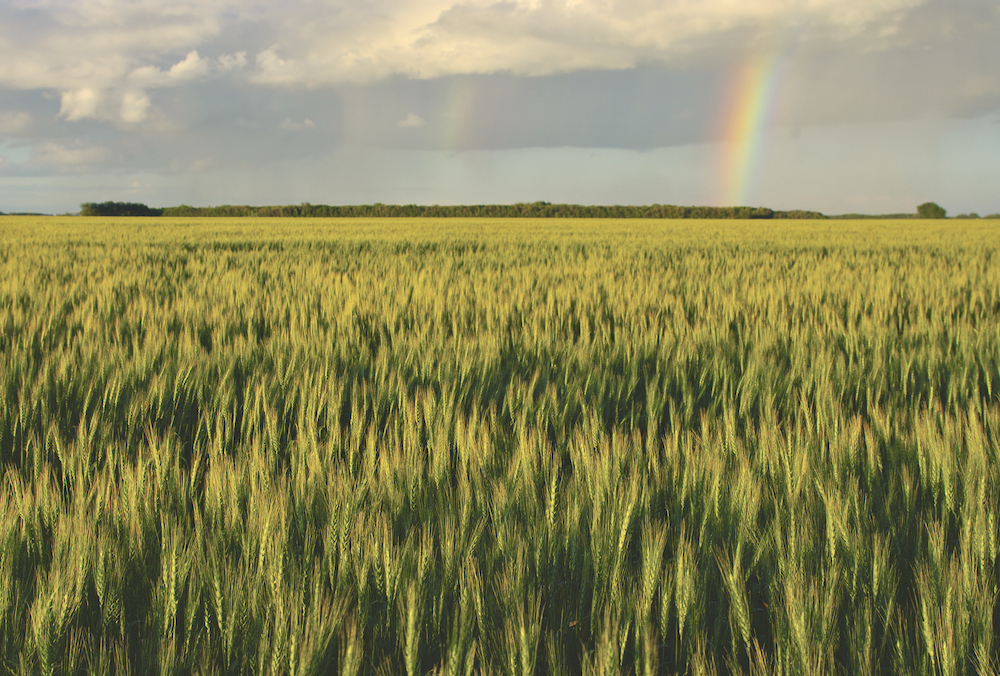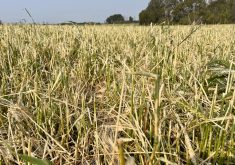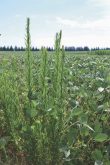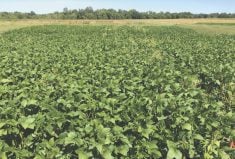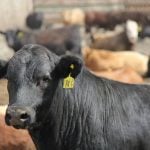Sometimes it’s all or nothing where Mother Nature is concerned.
The growing seasons in 2020 and 2021 were both dry, so it’s perhaps not surprising that in a trial designed to quantify the impact of using a seed treatment on spring wheat, there’d be very little return on investment in those years.
It’ll be more interesting to see the results of the trial in 2022, which boasted one of the wettest springs on record in Manitoba, says Ashley Ammeter, agronomy extension specialist in cereal crops for Manitoba Crop Alliance (MCA).
Read Also

Producers aren’t panicking over tariffs and trade threats
The influence of tariff and trade uncertainity on farm business decisions.
This project, a three-year study, is part of MCA’s Research on the Farm program, which works with farmers to expand on small-plot research via replicated trials on the farm.
Ninety per cent of trial sites used fungicidal seed treatments only, with no insecticide component. Out of 17 sites, only two sites — one in MacDonald, near Osborne in 2020, and one in Gilbert Plains in 2021 — showed a statistical difference in yield using a seed treatment — about 2.6 bushels per acre. The rest of the sites saw no difference in those two years. There was no plant protein difference after harvest.
Ammeter says the research team looked into both agronomic and economic impacts, and even though there was an agronomic benefit to using a seed treatment at those two sites, an application still didn’t pencil out for producers.
“In those two sites, it was a net loss. So even though there was an increase in yield, when the economics worked out based on wheat prices, the net gain based on that yield increase was not enough to make up for the cost of the inputs,” says Ammeter. “In different conditions, when wheat prices are high and your input costs are lower, that may turn out differently.”

Seed treatments are used in wheat to combat both fungal diseases and insect pests. One yield-impacting culprit in wheat is common root rot, which is caused by a complex of soil-borne fungi, and which can lead to fewer tillers and smaller and fewer seeds per head in infected plants, according to Manitoba Agriculture.
Spores can stay in the ground for several years, underscoring the importance of longer rotations, and abiotic stresses — including drought or excess heat or moisture — can intensify the severity of the damage.
According to David Kaminski, a plant pathologist for Manitoba Agriculture, a range of moisture conditions is conducive to infection. “The compounded effects of dry years is that you’ll see less of any of the root rots,” he says. “The pathogens that I’ve been talking about this spring and early summer have been some of the water moulds like phytophthora and pythium, which can do well in oxygen-deprived conditions. Those pathogens have a pretty wide host range and there are species that affect cereals.”
Kaminski says producers should choose certified seed as a starting point for disease prevention. But that’s not to say they shouldn’t be using seed treatments.
“There is uncertainty every spring about the conditions you’re going to experience, so a broad-spectrum seed treatment is always a worthwhile addition.”
Anne Kirk is the cereal crop specialist for Manitoba Agriculture. She says some farmers choose to treat their seed every year, some never do, and some make the choice each year based on a range of risk factors.
The latter includes the field’s history of disease, tight rotations and weather.
“One of the important questions is weather conditions — if they’re cooler and wetter at seeding, the seed will be in the ground longer (before it germinates) and you’ll want to treat it. If temperatures are warm and the wheat will come up quickly, you may consider not using a seed treatment. If farmers have a wide rotation, they may be okay without treating their seed.” she says. “Because of the excess moisture this spring, a lot of farmers would have chosen to treat.”
Kirk says the MCA study highlights the importance of replicated trials. “If field A did a lot better than field B, there are a lot of factors that could come into it, so replicated strips provide a lot of valuable information,” she says.
Manitoba Agriculture’s Guide to Field Crop Protection includes a list of seed treatment options for spring wheat. The guide, along with other resources, can be found at the Manitoba government website.


